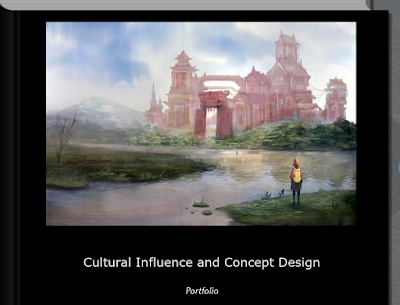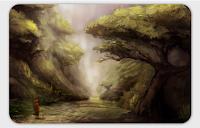Character Design Reflection
The above two images are boards of original character and costume designs, based on the studies previously created whilst analysing Asiatic visual culture and the case studies, particularly the Han Dynasty period. I am fairly happy with this outcome, as they appear to be the strongest character designs I have created yet! The colour palettes were heavily reds, oranges and blacks, as was the colours predominantly used in the cultures analysed. The use of Han-Dynasty costuming added a new layer of visual culture to the character designs, as well as suggested detail and personality. In particular, I like the second board, top right image as a character design and outfit. The form reads well, and is an effective example of the utilization of non-western influence in my own concept design.
The weapons on the characters person are typical staffs and spears used in Han Dynasty China, with some twists such as rifles and other details added to add my own flair.
For next steps, I will take the chosen figures and create turnarounds from them, or using them as smaller scale objects in larger concept pieces.
Avatar: The Last Airbender Analysis
Avatar: The Last Airbender is an American animated series featured on Nickelodeon from 2005 to 2008. The series is heavily inspired by Eastern Asian mythologies, in both visual design and plot/lore. Avatar was highly popular in the West, due to it's fantastical Asiatic style combined with relateable, western characterisms.
The show is set in a semi-magical world in which some characters can physically manipulate the elements using various forms of Chinese martial arts, this is known as bending.
The four prominent nations in Avatar are Earth, Water, Fire and Air. The idea of a set number of elements is popular in both Indian and Asian mythologies.
Each elements "benders" use martial arts techniques based in existing fighting arts methods.
The fire nation use Kung Fu.
The earth nation use Hung Gar.
The air nation use Baguazhang, or "circle walking"
The water tribe use Tai Chi.
Costume:
Each nation features a bold and noticeable colour palette, allowing for the different cultures within the Avatar mythology to be distinct and individual.
Architecture/Environment
Avatar: TLA infuses it's environment with Asiatic visual culture, creating a unique yet familiar setting and mythology. There are many structures and locations within this series that are directly inspired from existing structures.
For example, the Air Temples in the series are very similar to the Temples of Bhutan, a real-life mountaintop temple.
These are costume studies created whilst analysing the materials provided by Avatar research. Each outfit is based on the various real-life Asiatic costumes represented in Avatar. These serve as both practical analysis and a good basis for designing costumes for the project.





















































